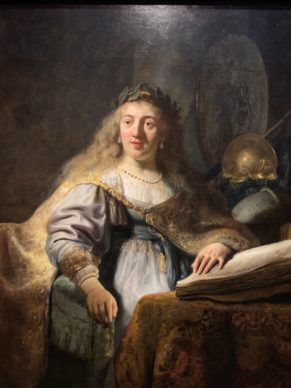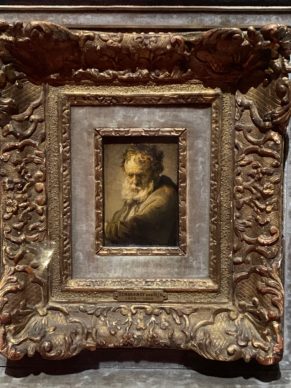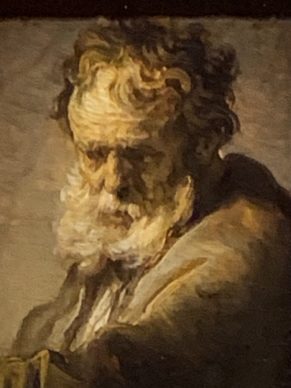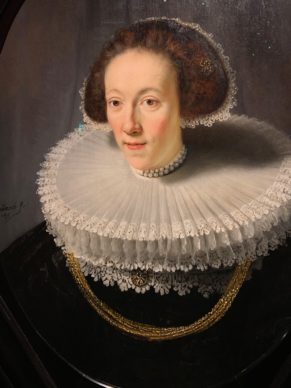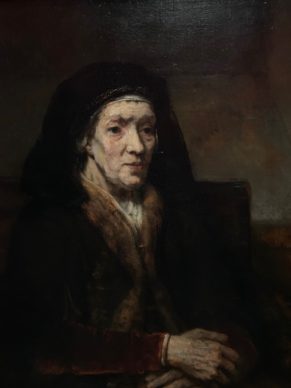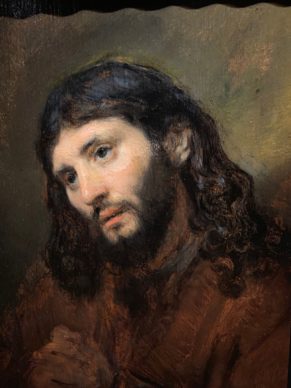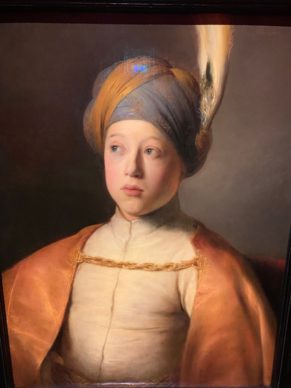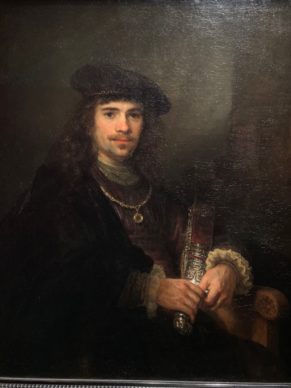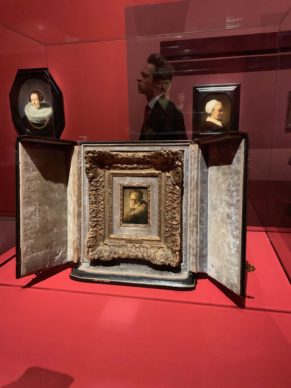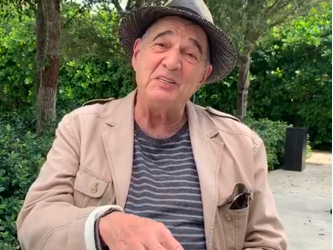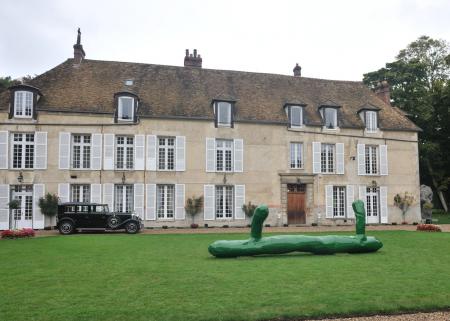Vanished Leonardo
After a little over a year in existence and with over a million visitors, the Louvre Abu Dhabi has shown itself to be a force to be reckoned with in the museum world.
To do so it wasn’t necessary to acquire an overly restored Leonardo da Vinci painting, of which we’ve had no news as of yet (1).
A Leonardo from Paris
In addition to the exceptional deployment of their permanent collections charting the evolution of humankind through its creations, presented in a grandiose architectural setting with a dome, designed by French architect Jean Nouvel, the museum is currently housing names from the very pinnacle of art history, including “La belle ferronnière” by Leonardo da Vinci on loan from the Louvre until August, but also “The Lacemaker” by Vermeer, another fascinating painting from the Louvre, and a monumental “Minerva” by Rembrandt van Rijn (1606-1669), which accompanies fourteen other paintings alongside drawings and etchings by the Dutch master.
Thomas Kaplan
These works have all travelled to take part in the exhibition “Rembrandt, Vermeer and the Dutch Golden Age” which is mainly composed of the collection belonging to the American businessman Thomas Kaplan (see the post on the collector), part of which has already been exhibited at the Louvre in Paris in 2017 followed by Beijing, Shanghai, St Petersburg and Moscow.
Rembrandt
To coincide with the exhibition, the Louvre Abu Dhabi announced that it has acquired a portrait of Christ by Rembrandt. It was bought at auction last December at Sotheby’s for 10.6 million euros (the Louvre Abu Dhabi has an annual acquisition budget of 40 million euros). The painting is small in size and startlingly beautiful.
Jewish Christ
Clearly the master of chiaroscuro, seeking to produce something close to a realistic portrait of Jesus, went in search of a young model in Amsterdam’s Jewish community.
Lending Library
Thomas Kaplan has developed a new concept with his Leiden collection: a “lending library” of art. He decided to dedicate part of his assets to Rembrandt and the Dutch Golden Age, but without ever using the paintings for personal gain.
He acquires them in order to make them available to the public in institutional settings. He explains:
The collection, which was first established in 2003, today contains 250 works, the highlights of which are all on display at the Louvre Abu Dhabi, rounded off with a few loans from institutions such as the Rijksmuseum and of course the Louvre in Paris, which is handling the co-curation with Blaise Ducos.
Blaise Ducos explains the idea behind the exhibition:
Vermeer
The Leiden collection contains the only Vermeer – recognized as such – in private hands.
“Young Woman Seated at a Virginal” was sold in 2004 for 24.3 million euros. Next to it hangs “The Lacemaker”, the culmination of the Delft painter’s creation, which belongs to the Louvre in Paris.
Science today allows us to discover astonishing details about how artworks were created, as Blaise Ducos reveals that the two paintings presented as neighbours in Abu Dhabi were cut from the same piece of canvas.
The owner of 15 Rembrandt
Thomas Kaplan now has fifteen Rembrandts in his possession.
He explains that he has had a passion for the artist since he was 6 years old:
Kaplan owns, among others, a majestic “Minerva” acquired from the New York former dealer Otto Naumann.
And he has a large appetite. He’s made the purchase of no less than four works by Rembrandt over the last two years.
Andrew Mellon
The smallest, but also the most expensive by cm2 according to the insurance company, once belonged to the legendary Washington collector Andrew Mellon.
It’s a little grisaille work on paper depicting an old man’s head with great precision. Mellon built a box to transport the work everywhere he went. This is only the second time it has been exhibited.
More recently it has belonged to a Japanese collector.
Kaplan describes it as his “Holy Grail” that he’s been trying to acquire for many years.
Petronella
The collector doesn’t hide his unconditional love – aside from that which he has for his wife, Daphne, with whom he makes joint decisions on the collections – for an eternally young creature with pale skin, dressed in a very voluminous white ruff who goes by the name of Petronella. Rembrandt painted her portrait in 1635 and on 7 December 2017 Christie’s sold it at auction for 3.8 million euros.
She has long been separated from her husband, or at least from the portrait of her husband Philips Lucasz, painted by Rembrandt around the same time. His portrait belongs to the collections of the National Gallery in London. The institution did not appear at the auction.
Jan Lievens
But the real revelation of this very rich exhibition is an artist who’s been relatively overlooked. Jan Lievens (1607-1674) was the friend and rival of Rembrandt when he first started out, when they both lived in the little town of Leiden.
It’s to be believed that the rivalry between the two men brought out the best in Lievens, as the Leiden collection shows, since it contains many of his masterpieces.
See his self-portrait, which is very modern in style. Or his portrait of Prince Rupert of the Palatinate making use of a powerful chiaroscuro effect, marked, among other things, by a luminous golden yellow tunic (bought for 1.7 million euros at auction in 2004).
Later the poor Lievens left for the English court with relative success and then returned to Amsterdam.
Having languished in obscurity for too long, here he is emerging from limbo thanks to the Louvre of the sands and his childhood friend, the genius that is Rembrandt.
Until 18 May. https://www.louvreabudhabi.ae/
(1)About the vanished Leonardo
The Abu Dhabi tourism authority (and not the museum itself) announced it had acquired the Leonardo da Vinci, Salvator Mundi sold for 450 million dollars by Christie’s. According to numerous specialists, the painting has been excessively restored.
The Salvator Mundi was due to be officially unveiled at the Louvre Abu Dhabi in September 2018 but this has not yet happened and the representatives of the museum are refusing to comment, stating that they are not responsible for the acquisition.
So we still don’t know where the painting is today (see the report on the subject). It would seem, however, that it was seen in a highly confidential context a few months ago in Abu Dhabi.
Donating=Supporting

Support independent news on art.
Your contribution : Make a monthly commitment to support JBH Reports or a one off contribution as and when you feel like it. Choose the option that suits you best.
Need to cancel a recurring donation? Please go here.
The donation is considered to be a subscription for a fee set by the donor and for a duration also set by the donor.


